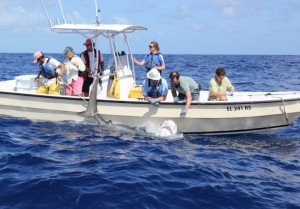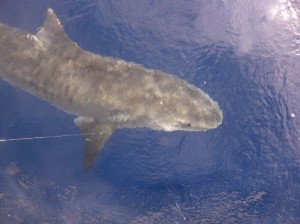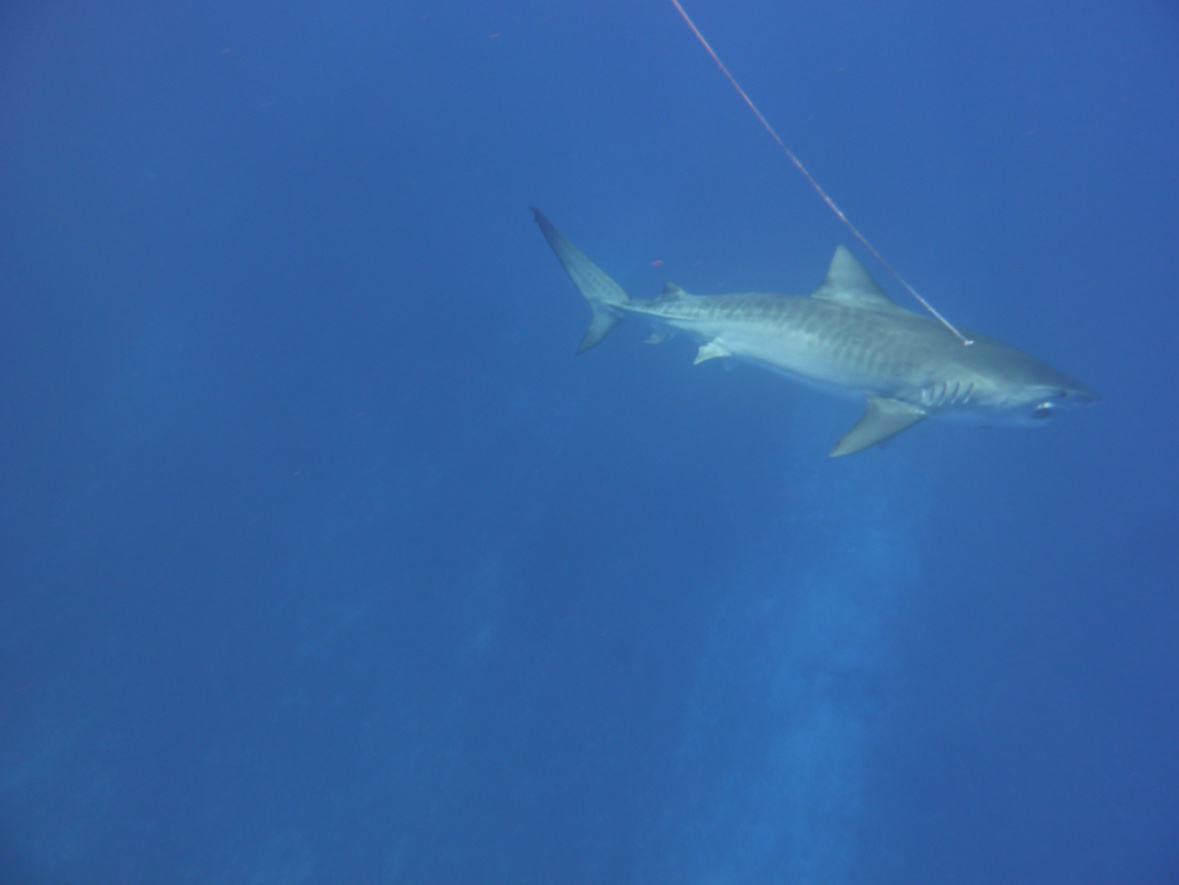November marks the beginning of CEI’s Shark Research and Conservation Program’s third field expedition for the Historic Bahamian Shark Abundance Project. Led by Shark Research and Conservation Program Director, Edd Brooks, and Jeff Stein, Senior Research Scientist from the University of Illinois, the project is replicating a series of fisheries-independent longline surveys, which took place over 30 years ago, from 1975-1982. The original dataset was collected by Captain Stephen Connett of the vessel R/V Geronimo, which conducted the initial surveys on the shallow bank known as “the bridge,” that connects the southern tip of Eleuthera to the northern tip of Cat Island. The initial surveys documented a total of six species, however the majority of the catch was dominated by tiger sharks (Galeocerdo cuvier) at 54% of the catch, and Caribbean reef sharks (Carcharhinus perezi) at 33%.
The original dataset was collected by Captain Stephen Connett of the vessel R/V Geronimo, which conducted the initial surveys on the shallow bank known as “the bridge,” that connects the southern tip of Eleuthera to the northern tip of Cat Island. The initial surveys documented a total of six species, however the majority of the catch was dominated by tiger sharks (Galeocerdo cuvier) at 54% of the catch, and Caribbean reef sharks (Carcharhinus perezi) at 33%.
Funding for four expeditions to the bridge was obtained in 2011 and to date two have been completed. Preliminary analysis of data from the previous expeditions (November 2011, March 2012) is already providing us with some valuable results. After 12 scientific longline sets the crew has caught 84 sharks from three species and has documented a shift in the assemblage compared to the historical dataset. Now, Caribbean reef sharks represent 67% of the catch and tiger sharks only 31%.
A few days ago the team reconvened at CEI to start the third, two-week expedition. One day of sampling had been completed before the weather deteriorated. Two reef sharks were caught and tagged and a large (2.5 m) blue shark (Prionace glauca) was spotted circling the boat, a rare sighting as this is typically a temperate species. The weather is due to get better on Sunday morning when the team will return to the bridge so stay tuned for more updates!
-Stephanie Liss, Master’s Student at the University of Illinois, Research Associate on Historic Shark Project
